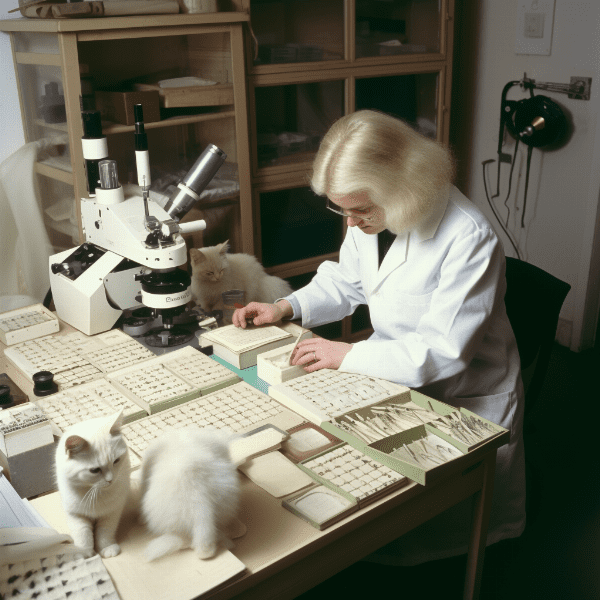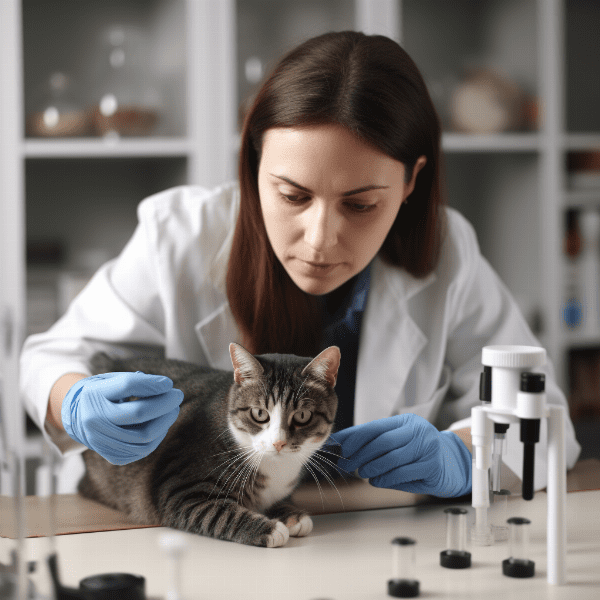Table of Contents
- Understanding Ragdoll Genetics: An Overview
- Common Genetic Diseases in Ragdoll Cats: Symptoms and Causes
- Testing for Genetic Diseases in Ragdoll Cats: Available Options
- Breeding Ragdoll Cats: Best Practices to Avoid Genetic Diseases
- Managing Genetic Diseases in Ragdoll Cats: Treatment and Care
- Support and Resources for Ragdoll Cat Owners Affected by Genetic Diseases
- Future Prospects: Advances in Genetics Research and Ragdoll Cat Health
Understanding Ragdoll Genetics: An Overview
To understand genetic diseases in Ragdoll cats, it’s important to first have a basic understanding of how genetics works in these felines. Ragdoll cats have a distinct genetic makeup, which sets them apart from other breeds. This section provides an overview of Ragdoll cat genetics, including their breed history and key genetic traits.
The Origins of Ragdoll Cats
Ragdoll cats were first bred in the 1960s by Ann Baker, a breeder based in California. Baker selectively bred a white, long-haired female cat named Josephine with several other cats, including a Birman and a Persian. The result was a cat with a friendly, docile nature, and a plush coat that doesn’t mat easily.
The Ragdoll Cat’s Genetic Makeup
The Ragdoll cat is a large breed, with males weighing up to 20 pounds. They have a long, silky coat that comes in a variety of colors, including seal, chocolate, blue, and lilac. Ragdoll cats also have striking blue eyes, which are a defining feature of the breed.
In terms of genetics, Ragdoll cats are known for their “pointed” coat pattern, which is similar to that of the Siamese cat. This pattern is caused by a gene that affects the production of pigment in the cat’s fur. Additionally, Ragdoll cats have a recessive gene for white spotting, which can cause them to have white paws, chest, and belly.
Key Genetic Traits in Ragdoll Cats
Aside from their pointed coat pattern and recessive gene for white spotting, there are a few other key genetic traits that are commonly found in Ragdoll cats. For example, many Ragdolls have a genetic predisposition to hypertrophic cardiomyopathy (HCM), a condition that affects the heart muscles and can lead to heart failure.
Another genetic trait found in Ragdoll cats is their susceptibility to feline infectious peritonitis (FIP), a viral disease that can be fatal. Ragdoll cats are also prone to polycystic kidney disease (PKD), a condition that can lead to kidney failure.
By understanding the basic genetic makeup of Ragdoll cats and the key traits that are common in the breed, we can better understand how genetic diseases manifest and what steps can be taken to prevent and manage them. In the next section, we will delve into some of the most common genetic diseases that affect Ragdoll cats and their symptoms.

Common Genetic Diseases in Ragdoll Cats: Symptoms and Causes
Despite their overall health and vitality, Ragdoll cats are prone to certain genetic diseases that can affect their quality of life. In this section, we will discuss some of the most common genetic diseases found in Ragdoll cats, their causes, and the symptoms to look out for.
Conclusion
While Ragdoll cats are generally healthy and resilient, they are prone to certain genetic diseases that can affect their well-being. By understanding the common genetic diseases that affect Ragdoll cats and the symptoms to look out for, owners can take steps to prevent and manage these diseases. In the next section, we will discuss the available testing options for genetic diseases in Ragdoll cats.

Testing for Genetic Diseases in Ragdoll Cats: Available Options
If you own a Ragdoll cat or are considering adopting one, it’s important to be aware of the genetic diseases that are common in the breed. Testing for these diseases can help identify potential health risks early on, allowing for better management and treatment. In this section, we will discuss the available testing options for genetic diseases in Ragdoll cats.
Genetic Testing
Genetic testing is the most reliable way to identify whether a Ragdoll cat carries a gene for a specific disease. The most commonly used genetic tests for Ragdoll cats are for HCM, PKD, and PRA. These tests involve taking a blood or cheek swab sample from the cat, which is then sent to a laboratory for analysis. If a cat tests positive for a particular genetic mutation, it means they carry the gene for that disease and may be at risk of developing it later in life.
Ultrasound
Ultrasound is another testing option for HCM in Ragdoll cats. An ultrasound uses high-frequency sound waves to produce images of the heart and can help detect abnormalities in heart structure and function. Ultrasound can also be used to monitor the progression of the disease in cats that have already been diagnosed with HCM.
Diagnosis of FIP
FIP can be difficult to diagnose as there is no definitive test for the disease. However, a combination of clinical signs, laboratory tests, and imaging studies can help with diagnosis. Blood tests and imaging studies, such as X-rays and ultrasounds, can help identify abnormalities in the internal organs. Veterinarians may also perform a biopsy of affected tissue to confirm a diagnosis of FIP.
Conclusion
Testing for genetic diseases in Ragdoll cats is an important step in maintaining their health and well-being. Genetic testing is the most reliable way to identify potential risks, while ultrasound and other imaging studies can help with diagnosis and monitoring. If you own a Ragdoll cat, talk to your veterinarian about the available testing options and what you can do to help manage your cat’s health. In the next section, we will discuss best practices for breeding Ragdoll cats to reduce the risk of genetic diseases.
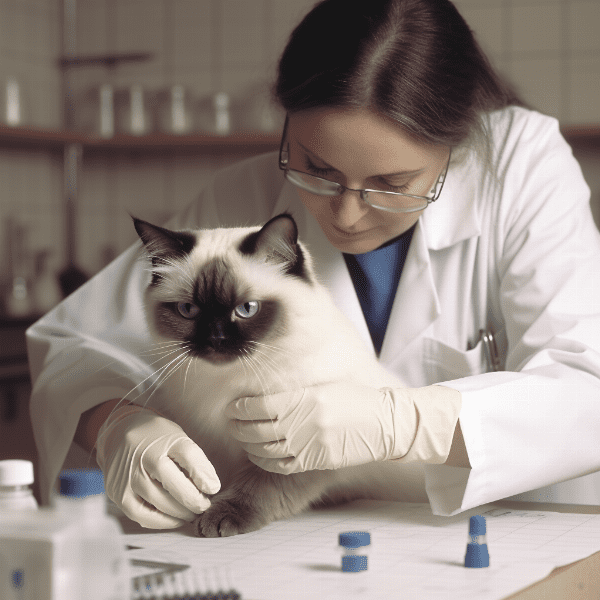
Breeding Ragdoll Cats: Best Practices to Avoid Genetic Diseases
Breeding Ragdoll cats can be a rewarding experience, but it’s important to take steps to ensure the health and well-being of the cats and their offspring. In this section, we will discuss best practices for breeding Ragdoll cats to reduce the risk of genetic diseases.
Selecting Breeding Cats
One of the most important steps in breeding Ragdoll cats is selecting breeding cats that are free of genetic diseases. This involves testing potential breeding cats for genetic diseases such as HCM, PKD, and PRA before breeding them. It’s also important to select cats with a diverse genetic background to reduce the risk of inbreeding, which can increase the likelihood of genetic diseases.
Proper Nutrition and Care
Proper nutrition and care are also essential for breeding healthy Ragdoll cats. Cats should be fed a balanced diet that meets their nutritional needs and promotes overall health. Regular veterinary checkups are also important to monitor the cats’ health and identify any potential health risks early on.
Responsible Breeding Practices
Responsible breeding practices are crucial for maintaining the health and well-being of Ragdoll cats. This includes limiting the number of litters per year and allowing cats adequate time between litters to recover. It’s also important to socialize kittens and provide them with a safe and comfortable environment to promote their health and well-being.
Conclusion
Breeding Ragdoll cats can be a rewarding experience, but it’s important to take steps to ensure the health and well-being of the cats and their offspring. Selecting breeding cats that are free of genetic diseases, providing proper nutrition and care, and practicing responsible breeding techniques are all essential for breeding healthy and happy Ragdoll cats. In the next section, we will discuss how to manage and treat genetic diseases in Ragdoll cats.
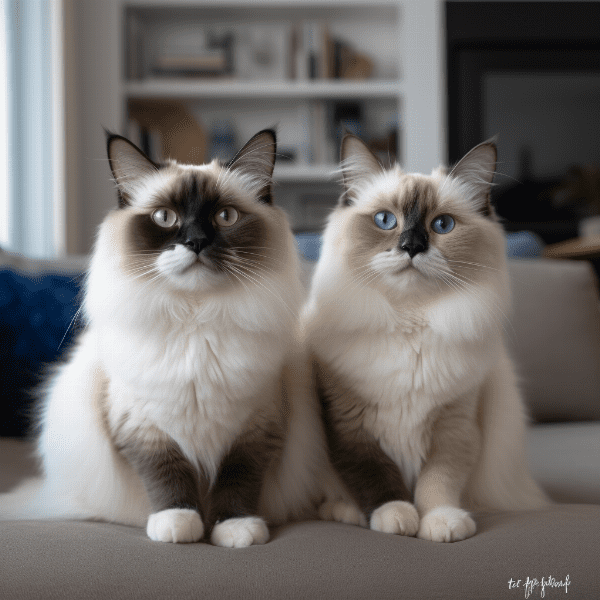
Managing Genetic Diseases in Ragdoll Cats: Treatment and Care
While genetic diseases in Ragdoll cats cannot be cured, there are several management and treatment options available to improve their quality of life. In this section, we will discuss how to manage and treat genetic diseases in Ragdoll cats.
Hypertrophic Cardiomyopathy (HCM)
Managing HCM in Ragdoll cats involves regular monitoring and treatment of symptoms. Medications such as beta-blockers and calcium channel blockers can help manage the symptoms of HCM and improve heart function. Cats with severe HCM may require surgery or other interventions to improve heart function.
Feline Infectious Peritonitis (FIP)
FIP is a fatal disease and there is currently no cure for it. Treatment options are limited to managing the symptoms of the disease and providing supportive care. This may include medication to reduce fever and inflammation, as well as intravenous fluids to prevent dehydration.
Polycystic Kidney Disease (PKD)
There is no cure for PKD, but early detection and management can help slow the progression of the disease. Treatment options may include medications to manage symptoms such as high blood pressure and urinary tract infections. Cats with advanced PKD may require dialysis or a kidney transplant.
Progressive Retinal Atrophy (PRA)
There is no cure for PRA, but there are several management options available to help cats adapt to their vision loss. This may include environmental modifications such as providing tactile cues, as well as behavioral training to help cats navigate their surroundings.
Conclusion
While genetic diseases in Ragdoll cats can be challenging to manage, there are several treatment and management options available to improve their quality of life. Regular veterinary checkups and early detection are key to managing these diseases effectively. In the next section, we will discuss resources and support available to Ragdoll cat owners affected by genetic diseases.
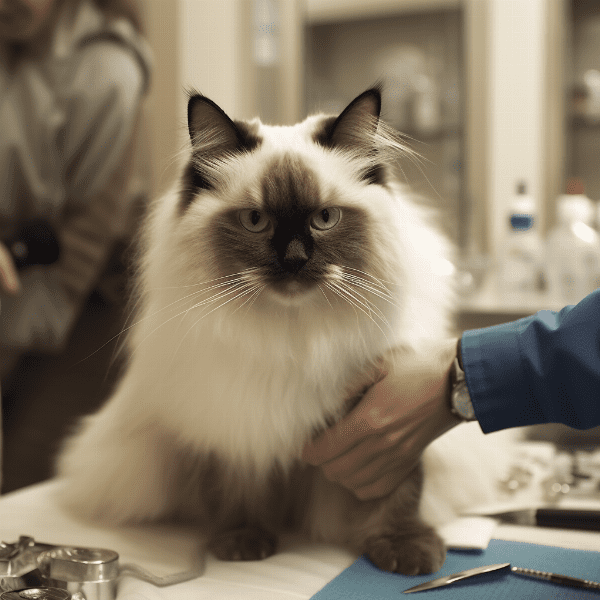
Support and Resources for Ragdoll Cat Owners Affected by Genetic Diseases
Discovering that your Ragdoll cat has a genetic disease can be a stressful and emotional experience. In this section, we will discuss the resources and support available to Ragdoll cat owners affected by genetic diseases.
Online Communities and Support Groups
Online communities and support groups can be a valuable resource for Ragdoll cat owners affected by genetic diseases. These groups provide a platform for owners to connect with others who are going through similar experiences, share information and advice, and provide emotional support.
Genetic Testing Laboratories
Many genetic testing laboratories offer resources and support to cat owners, including information about specific genetic diseases and testing options. These laboratories may also provide counseling services to help owners understand their cat’s test results and what they mean for their cat’s health.
Ragdoll Cat Associations and Clubs
Ragdoll cat associations and clubs can also be a valuable resource for cat owners affected by genetic diseases. These organizations often provide information about genetic diseases that are common in the breed, as well as resources for testing and treatment.
Veterinarians and Veterinary Specialists
Veterinarians and veterinary specialists are a valuable resource for Ragdoll cat owners affected by genetic diseases. They can provide information about testing and treatment options, as well as advice on managing and caring for cats with genetic diseases.
Conclusion
Discovering that your Ragdoll cat has a genetic disease can be overwhelming, but there are resources and support available to help you manage and care for your cat. Online communities, genetic testing laboratories, Ragdoll cat associations and clubs, and veterinarians and veterinary specialists are all valuable resources for cat owners affected by genetic diseases. In the final section, we will discuss future prospects for genetics research and Ragdoll cat health.
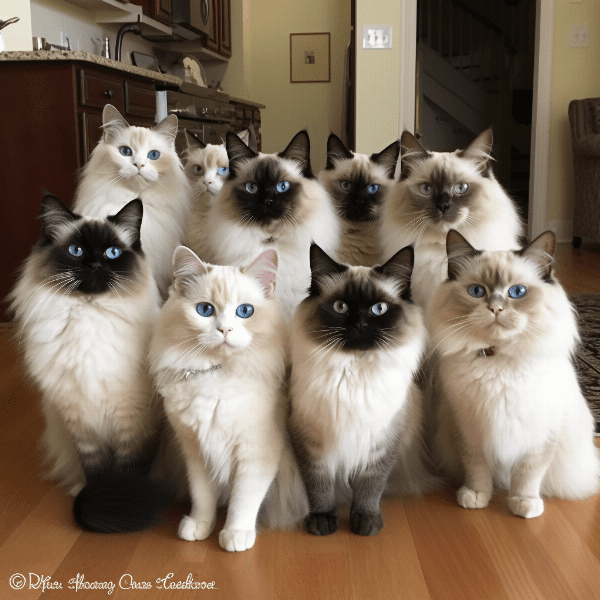
Future Prospects: Advances in Genetics Research and Ragdoll Cat Health
As genetics research continues to advance, there is hope for improved health and well-being for Ragdoll cats. In this section, we will discuss some of the future prospects for genetics research and Ragdoll cat health.
Gene Therapy
Gene therapy is a promising area of research that has the potential to cure genetic diseases in Ragdoll cats. Gene therapy involves introducing healthy genes into the cat’s body to replace the mutated genes that are causing the disease. While gene therapy is still in the experimental stage, it shows great promise for the treatment of genetic diseases in the future.
CRISPR-Cas9
CRISPR-Cas9 is a revolutionary gene-editing technology that allows scientists to edit genes with precision. This technology has the potential to correct genetic mutations that cause diseases in Ragdoll cats. While CRISPR-Cas9 is still in the early stages of development, it shows great promise for the future of genetics research and Ragdoll cat health.
Improved Genetic Testing
As genetics research continues to advance, genetic testing options for Ragdoll cats are likely to improve. This may include new tests for previously unidentified genetic mutations that cause diseases in the breed. Improved genetic testing can help identify potential health risks earlier and improve the overall health and well-being of Ragdoll cats.
Conclusion
While genetic diseases are a challenge for Ragdoll cat owners and breeders, advances in genetics research offer hope for improved health and well-being for these beloved felines. Gene therapy, CRISPR-Cas9, and improved genetic testing are just a few of the promising prospects for the future of genetics research and Ragdoll cat health. By staying informed and proactive about genetic diseases, we can help ensure that Ragdoll cats continue to thrive and bring joy to their owners for years to come.
